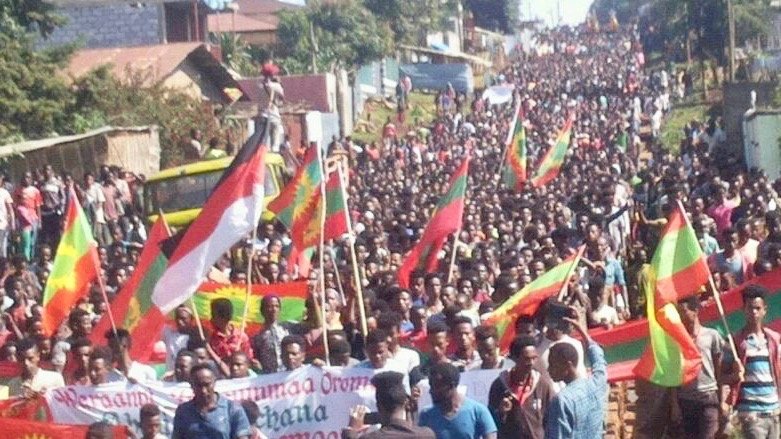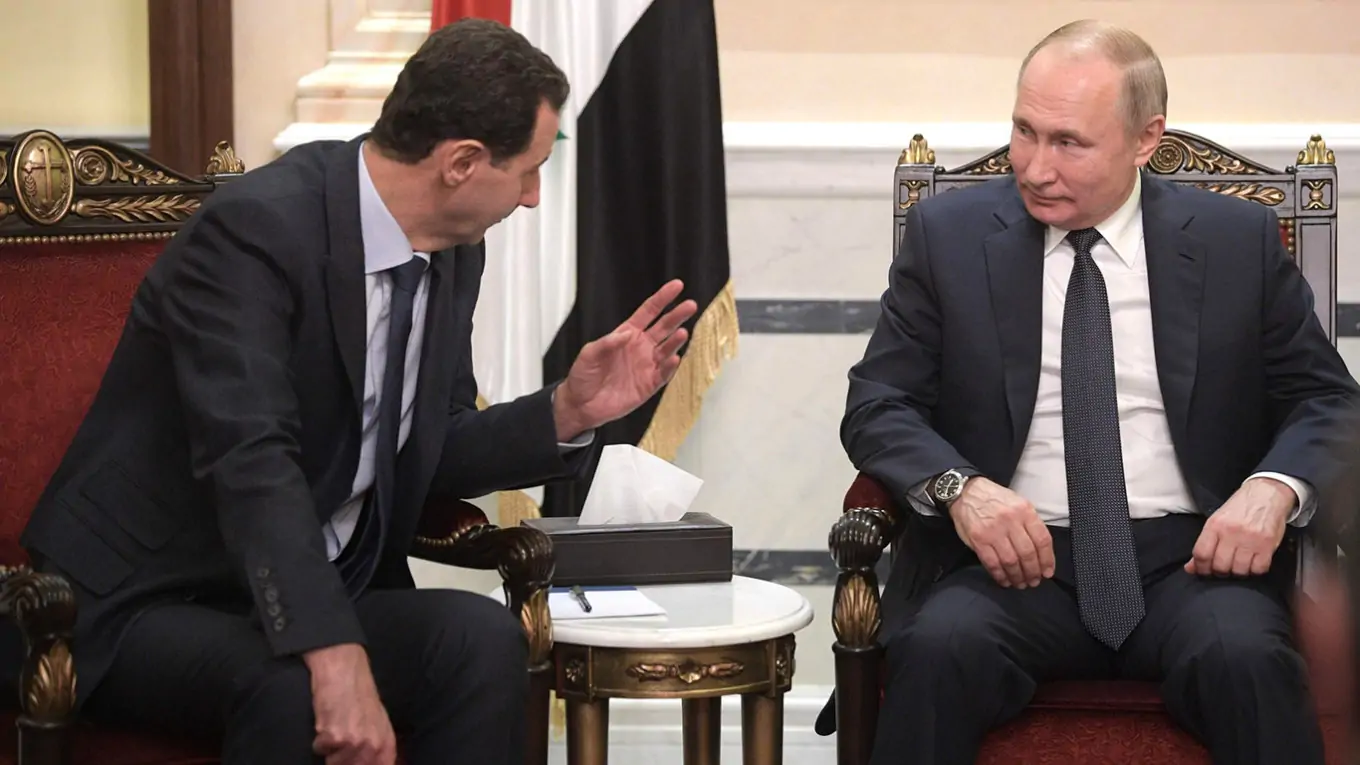By Abdiwahab Sheikh Abdisamad
 Ethiopia, located in the heart of the Horn of Africa, is once again on the verge of descending into chaos. The echoes of Yugoslavia’s tragic unraveling can be felt in this nation, as ethnic tensions escalate and threaten to tear the country apart.
Ethiopia, located in the heart of the Horn of Africa, is once again on the verge of descending into chaos. The echoes of Yugoslavia’s tragic unraveling can be felt in this nation, as ethnic tensions escalate and threaten to tear the country apart.
Over the past year, internal conflicts have ravaged Ethiopia, causing immense devastation and tearing apart communities. The rise of ethnic militias, such as the active FANO militia in the Amhara region, has exacerbated the situation. These armed groups, driven by long-standing ethnic grievances and historical animosities, have taken advantage of the growing power vacuum and unleashed a wave of violence that poses a threat to the entire nation.
In the populous heartland of Oromia, the largest federal region, the situation has rapidly deteriorated from bad to critical. The loss of 18 out of 21 provinces to various armed factions has plunged the region into chaos. The Oromo Liberation Army (OLA) and the Oromo Liberation Front (OLF), the two main militias, are locked in a power struggle for control over the government, leaving innocent civilians caught in the crossfire. The once vibrant cities along the road to Addis Ababa now resonate with the sounds of gunfire and despair, as armed gunmen have effectively blockaded the capital. Ordinary Ethiopians live in fear of what the uncertain future may hold.
At the centre of this maelstrom of chaos and despair stands Prime Minister Abiy Ahmed Ali, whose weak and incompetent leadership has only served to exacerbate the nation’s woes. Far from being a unifying figure, Abiy has proven himself to be little more than a vestige of vested interests, incapable of rising above the petty squabbles of ethnic politics. His narrow-minded antics and inability to grasp the gravity of the situation have left Ethiopia adrift, with no clear direction or purpose.
Ethiopia’s leaders have a history of stepping down during tough times, but current leader Abiy Ahmed remains in power despite the country’s deteriorating security and near-collapse.
Abiy Ahmed, 47, came to power in April 2018 after his predecessor, Hailemariam Desalegn, resigned after more than three years of protest from the Amhara and Oromo ethnic groups, which were demanding political freedom and good governance. Abiy Ahmed is a member of the Oromo ethnic group, the majority in Ethiopia. This community has long felt marginalized, and his appointment, at the time was seen as a bridge to mend the growing rift among ethnic groups in the country.
On May 21, 1991, Ethiopia’s then-president Mengistu Haile Mariam resigned and fled the country, ending his 14-year rule of the Horn of Africa nation. Mengistu resigned just two days after rebel groups led by Meles Zenawi captured two strategic towns, cutting the capital, Addis Ababa, to much of the country. Zenawi became president from 1991 to 1995 and was the second prime minister of Ethiopia until he died in 2012.
These two resignations show how they saved Ethiopia from collapse and steered the country to relative peace and normalcy, even though Ethiopian leaders, typically have
a history of ruling their population with an iron fist and deploying brute force against those who opposed them.
A few months after his appointment, he launched reforms, releasing political prisoners, appointing more women as ministers, and signing a peace deal with Eritrea after decades of conflict. This led to Abiy being awarded what many have to classify as a premature and poorly aged Nobel Peace Prize in 2019.
In November 2020, just a mere 390 days after winning the Nobel Peace Prize for a historic peace agreement with Eritrea, the Tigray People’s Liberation Movement (TPLF) attacked the largest army base (Northern Command) in the Tigray region forcing Abiy Ahmed to respond with a military operation to restore security. The immediate former regime of TPLF which itself brutally ran Ethiopia from 1991 to 2018 miscalculated
their chances and went into a costly war. Their overconfidence was in part due to the nudging by their many links & ‘friends’ in the West, primarily the United States of America, over their 3 decades in power coupled with the pilfering of the national coffers which they eventually used as a formidable war chest.
As part of TPLF’s continued miscalculation, it expanded the war into other regions in Ethiopia, namely the Amhara and the Afar regions, and even launched over 100 rockets into the neighbouring country, Eritrea, in an effort to drag Eritrea into the conflict. This brutal civil war in the north of the country killed at least 600,000 people according to conservative estimates while 1.8 million more were displaced, according to the United Nations.
The Ethiopian government eventually signed a peace agreement with TPLF which was forced to sue for peace as they had all but been defeated, this peace process came to be known as the Pretoria agreement, ending the two-year-old conflict.
Experts argue that the TPLF was nudged to sign this “peace agreement” in an effort to avoid its total annihilation. Some also say that Abiy’s capitulation to the whims of outside influence, namely Mike Hammer of the United States, who was seemingly more interested in saving TPLF than finding a lasting solution to the war, is what led to the current catastrophic situation.
As the peace agreement was holding up in the north, another rebellion quickly emerged in the Amhara region. The Amhara fought alongside the ENDF in the Tigray region but this alliance quickly collapsed after clear signs of betrayal by Abiy began to emerge immediately after the signing of the peace deal with the TPLF. The Amhara had felt that the “disarming” clause of the peace agreement was being unfairly applied to disarm them while leaving others, namely the TPLF, fully armed. Relations between Abiy and Amhara worsened, and the government immediately lost close to 75 percent of the Amhara territory to regional forces and militias.
Compounding these internal fissures is the resurgence of the TPLF rebel group, which has reneged on the terms of the fragile peace agreement brokered in Pretoria. With their threats of secession looming large, the TPLF’s defiance threatens to reignite the flames of civil war that nearly consumed the whole country. The wounds of that conflict are still fresh, and the prospect of a return to such bloodshed is a nightmare that few dare to contemplate.
Abiy is also facing the biggest rebellion from ‘his’ own Oromia region as the Ethiopian government is simultaneously dealing with an armed uprising in three powerful regions: Amhara, Oromia, and Tigray, which increasingly says it would secede from the rest of the country.
In these rounds of conflicts since November 2020, it’s estimated to have taken the lives of more than 1.5 million people. According to a recent study conducted by Addis Ababa University, more than 5,000 (five thousand) conflicts were recorded in the last five years, resulting in the loss of 1.5 million lives.
When Abiy Ahmed is not fighting the most populous region and ethnic groups, his government is overseeing and supporting the inter-communal fighting between Afar and Somalis living in Ethiopia.
Indeed, Abiy’s misguided policies have only served to fan the flames of ethnic conflict. His latest decision to deploy federal forces to intervene in the dispute between the Afar and Somali in the Sitti province has only served to further incense violence and deepen divisions. By taking sides in these age-old disputes, Abiy, once again has effectively alienated large swathes of the population and sown the seeds of further discord. These 2 regions were the only regions with relative calm among all of the Ethiopian regions.
Ethiopia’s Somali region has accused Afar militias of massacring hundreds where the two communities fight over a long-running regional dispute, adding broader tensions and conflict in the horn of the African nation. Somalis accuse the federal government of being the encouraging hand supporting the expansionist Afar to their land. The dispute between these two ethnic groups was hugely felt by the Somali Issa clan, which lives along the border between Afar and Ethiopia’s Somali region. The Issa want to be part of the Somali region of Ethiopia while their ancestral land has been included within the Afar regional boundary.
In 2014, the Afar and Somali regional governments agreed to give a special status known as ‘Kebele’ for the disputed areas along its borders, but they have yet to resolve their differences. The Kebeles are predominantly inhabited by the aforementioned Issa clan. The land sits along the highway between Addis Ababa, Djibouti, and the Assab port in Eritrea. Some observers point to the continued fighting along that corridor as a long-term strategy of the regime to displace Somalis and use the Afar to take control of Djibouti and eventually, Ethiopia gets access to the Red Sea. Such is the unmitigated thought among Abiy’s regime.
As if to compound all of this, Ethiopia’s economic landscape has also been marred by significant challenges, with recent years witnessing mounting debts and fiscal strain. Amidst this backdrop, Ethiopia defaulted on many loans which has strenuously added to its economic woes, signaling a critical juncture for the nation’s financial stability.
Factors such as insufficient revenue generation, the COVID-19 pandemic’s aftershock and its impact on key sectors like tourism and exports have been cited, although these may very well make sense in explaining the country’s inability to meet its debt obligations, it also spends a hefty budget on defence, no need to ask defence against whom as the government is so concerned for its own survival that it has to
defend itself from its very own citizens. The recent default on loans not only underscores Ethiopia’s immediate financial difficulties but also highlights broader systemic issues requiring urgent attention to navigate the country towards sustainable economic recovery and growth.
Many people in the Horn of Africa are amazed by the United States’ continuous support for the Ethiopian regime under Abiy Ahmed even amidst his escalating violence and instability, this reflects a complex geopolitical calculus. Despite Abiy’s administration overseeing the largest surge in violence, including ethnic clashes and human rights abuses, the U.S. strangely supports Ethiopia as the ‘crucial ally’ in the strategically vital Horn of Africa region. However, it is open for all to see that the
U.S. support for Abiy Ahmed’s regime only seeks to exacerbate tensions and prolong conflicts, ultimately undermining long-term stability in the region.
Abiy Ahmed, on January 1st 2024, signed a memorandum of understanding with the breakaway region of Somaliland to build a military base and give it access to the sea in exchange for recognition. Somaliland is internationally recognized as part of Somalia; Abiy Ahmed’s promise of recognition directly violates the African Union’s charter which incidentally is headquartered in Addis Ababa. Although this move was always bound to backfire badly, the resulting mass public condemnation of Ethiopia by local, regional and international bodies on the respect for Somalia’s territorial integrity & political independence was something that Ethiopia could have avoided if Abiy Ahmed had any foresight devoid of immature political expediency.
The January agreement, signed in Addis Ababa between Prime Minister Abiy Ahmed and Somaliland separatist figurehead Muse Bihi, has reasonably angered Mogadishu, which sees it as direct interference with its sovereignty and territory. The agreement has raised tensions between Somalia and Ethiopia. Somalia’s president, Hassan Sheikh Mohamud, has till today refused to meet and discuss any issue with Ethiopia until it backtracks from the deal it signed with Hargeisa.
Ethiopia’s unbridled appetite for a port is not going away, but it was his famous “We must get a seaport even if we have to use force” that made Djibouti, Somalia and Eritrea wary of the madman Abiy Ahmed.
Abiy Ahmed is not afraid to anger his neighbours. He was at loggerheads with Kenya over the presence of Tigray rebel group leaders, though Nairobi was trying to help ease the tension and conflict between him and the Tigray leadership. Kenya does not like his craze for Orommuma expansionism either; basically, Abiy has, in the past, expressed support for Oromo nationalism which lays claim to parts of Kenya.
Ethiopia is locked in a land dispute with Sudan over al-Fashaga, a fertile borderland. Sudan, like Egypt, is not happy with Ethiopia over the construction and filling of the Grand Ethiopian Renaissance Dam (GERD), fearing the dam will reduce the Nile water that both countries heavily rely on for agriculture and other uses. Due to these fears, Abiy’s Chief of General Staff has accused Egypt and Sudan are arming elements in the regions of Gambella & Southern Nations, Nationalities and Peoples.
As the drums of war grow louder and the shadows of Yugoslavia’s tragic demise loom ever larger, the people of Ethiopia find themselves standing at a crossroads. The path ahead is fraught with danger and uncertainty, with the spectre of ethnic conflagration
casting a dark shadow over the nation’s future. Yet, amidst the chaos and despair, there remains a glimmer of hope – a hope that the people of Ethiopia will rise above their differences and forge a new path towards peace and reconciliation.
But time is running out, and the stakes could not be higher. Unless urgent action is taken to address the root causes of Ethiopia’s internal conflicts and to heal the wounds of the past, the nation risks being torn apart by forces beyond its control. The world must not stand idly by as Ethiopia hurtles towards the abyss – for the consequences of failure are too dire to contemplate.
Abdiwahab Sheikh Abdisamad is a research scholar who serves as the Founder and Executive Director at the Afro-Asia Institute for Strategic Studies.

















What readers walk away after reading this chicken scratch is Ethiopia will tear apart itself to shreds and there will be Greater Somalia in its place ala Af-Wayne Ziad Barre incarnated. Then one of the readers will try to give this day dreamer is stop hop scotching with your feet trying to be at three separate sovereign nations at the same time. You are a Kenyan and stay within your country’s borders. Otherwise, law-abiding Ethiopians will tell you to take a hike. Somali brothers and sisters will tell you the same. Capiche?